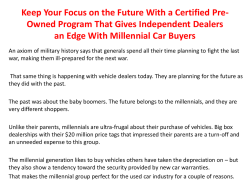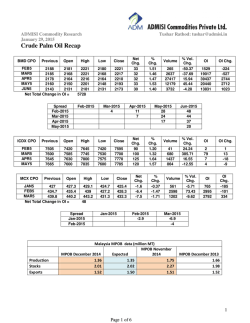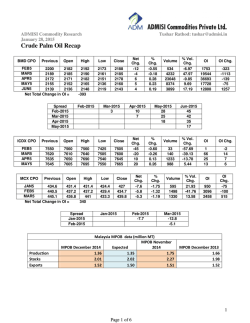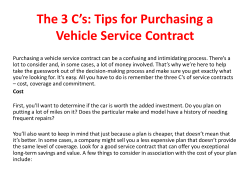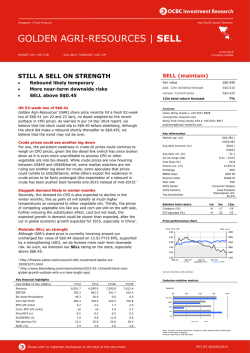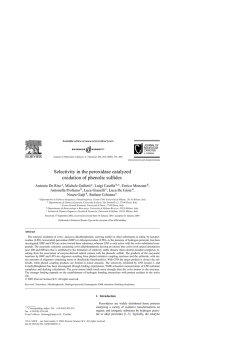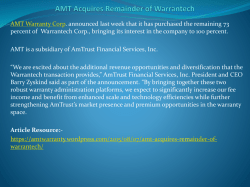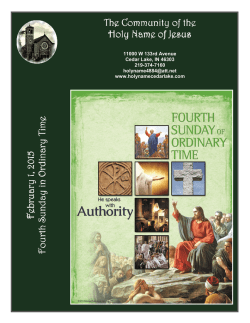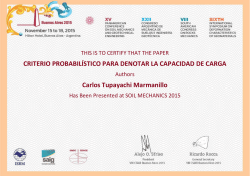
The CPO Playbook
Make the Right Call for Your Certified Pre-Owned Program By Getting Your Entire Team on the Same Page How do you build a top-tier certified pre-owned marketing program in your independent operation? You build it from the ground up. That means you start with the basics – a good partner to help you with your program and train everyone on their role in the process. When Peyton Manning was quarterback of the Denver Broncos, he would yell “Omaha” as he waited for the snap. Manning’s voice made the entire stadium tense up in anticipation of what was coming. Most important, his teammates snapped to a state of mental preparedness. When the snap came, they could react without thinking. The offense has the advantage over the defense – the offense knows what’s about to happen. Every player knows his responsibilities and if any of them fail to carry out their assignment the play won’t work. Because they have a plan, the team moves in unison, beginning at the sound of the quarterback’s voice. That can happen in your store. You can make is so everyone knows what to do when you call the play. When your staff knows which part of the playbook is being used and what everybody’s assignments are, the store becomes a team. Manning was able to get buy-in from his teammates because they all knew the situation. Some plays are designed to get one tough yard and some are after a big gain. When everyone knows the situation and the goal of the play, they can carry out their duties with a more dedicated commitment. So why are you calling the play for a CPO program? Even if you know the answer to that question it might not be obvious to your employees. The answer, really, is easy – to keep up with the competition. The popularity of certified pre-owned is not showing any signs of slowing down. In fact, CPO sales set records for six consecutive years, and when the final numbers are tallied for 2017, they’re expected to break the record again. Certified pre-owned vehicles are becoming more desirable even though fewer than half of all customers know what CPO entails. According to Autotrader’s 2014 CPO research study, 60 percent of car buyers said they’d like to look at a CPO unit while making a used car selection, but only 48 percent actually knew what it means for a vehicle to be certified. Those customers most likely don’t know the difference between warranties that come with a vehicle and extended service contracts that are purchased. That leads to several conclusions about how to maximize the value of a CPO program. Customers have heard of CPO and feel it is a better option. They also know it’s usually backed by a warranty for some period. The statistics tell us that to get the full value of a CPO program dealers should not rely on what customers think they know about certified pre-owned. A full presentation and explanation allows salespeople to create a need for the program. For example, at Auction Direct USA, one of the nation’s most successful CPO dealerships, salespeople walk customers past an education wall that teaches them about Auction Direct, NIADA and their partnership in the NIADA Certified Pre-Owned program. Sales is about giving enough information to allow customers to arrive at the conclusion you want them to. That definition requires your salespeople to have knowledge of what the dealership’s program includes. With that knowledge your salespeople can provide customers information that allows them to consider the value of the CPO program when weighing your dealership’s vehicles against the competition’s. The economy continues to grow, allowing more people to be able to buy a vehicle. That alone is going to create a spike in business. To capture more than their share of that market, independent dealers must be ready to compete for every deal. Analysts agree a majority of used vehicle buyers are interested in at least learning about CPO. That means if you do not have a CPO program, you are left fighting for the scraps among the minority of customers who don’t know about or are not interested in CPO. And it allows new car franchises and sophisticated independents to dine on the more lucrative segment of customers who are searching for certified pre-owned vehicles. You need to let your team know why the CPO play was called. The people who represent your programs to the public need to know it will allow the store to stay competitive and will make marketing to the entire spectrum of the used car business viable. Once the people who will make your program a success know why you are setting up a CPO program, the next question to answer is, “Why that one?” So how do you choose which program to bring into your dealership family? Factory programs are fantastic – but they’re not an option for independent dealers. OEMs only certify their branded vehicles exclusively through franchise stores. Even if independents could get in on the factory CPO programs, they have their issues. Just a few years ago, for example, the margin for CPO vehicles was as much as $2,500 more than for other inventory. Today, according to research by iseecars.com, it’s more in the $750-$1,200 range. That’s still a good return, but when you add in the average price of reconditioning a used vehicle to factory CPO specifications – including expensive items such as factory floor mats and four matching tires – most of that profit for OEM programs goes to expenses that don’t increase the customer’s satisfaction with the vehicle. Indeed, factory programs are so stringent with their qualifications that they only certify their brand at a factory store. Which is why some new vehicle franchises have begun to use independent programs to certify their non-factory inventory. Without a factory program what are you left with? There are three main ways to certify a vehicle. OEM programs are one. Independents can also self-certify through a service contract company. Or they can find an independent organization willing to certify the dealer’s CPO process. The best-known national certified pre-owned program for independent dealers in the NIADA Certified Pre-Owned program, sponsored by NIADA – an organization with more than 70 years of history whose mission includes promoting ethics in the used car industry. When NIADA wanted to bring its reputation and expertise to the CPO world it looked for a partner with the ability to certify pre-owned vehicles as well as experience and financial wherewithal to back those vehicles with a strong warranty. The exhaustive search for a program administrator led to AmTrust Financial Services and its wholly owned subsidiary, Warrantech. “The best thing about that is it’s the same administrator General Motors and Mazda use for their extended service contracts and CPO, giving independent dealers’ customers the same service a new vehicle franchise would give,” said Warrantech’s Natalie Suarez, director of NIADA Certified. As a result of NIADA’s partnership with AmTrust, Suarez said, “we are able to provide a high-level, complete marketing program for independent dealers.” NIADA’s program, Suarez said, “is designed to give customers the kind of service in the event of a breakdown that’s usually reserved for new car dealerships, elevating the independent dealer in the customer’s eyes. “And the more repeat and referral business dealers can generate, the less they spend on conquesting new customers.” One of the first car salespeople in America was a man named Eddie Rickenbacker, who was best known as America’s most decorated flying ace, earning the Medal of Honor in World War I. He also raced in the Indianapolis 500, helped design a vehicle that bore his name and founded Eastern Airlines. Rickenbacker always said he learned while selling cars that you had to find your advantage and move continually towards that advantage, a philosophy that allowed him to survive countless dogfights over France. “The one thing I know for a fact is every lot has the same vehicles and the prices are pretty much the same, so if you want to differentiate yourself from the pack, you better provide something no one else does,” longtime auto dealer and advertising pioneer Bob Catterson once said. “If you can’t do something special the only other choice is price, and price prohibits sales, not makes them.” NIADA adds to that advantage with CPO partners that include some of the biggest names in the industry, such as Carfax, eBay Motors and SiriusXM Radio, adding credibility with customers and making your inventory more visible on search engines. Not to mention AmTrust, which has earned an A rating on A.M. Best’s rating system as one of the most stable companies in America and an A+ rating with the Better Business Bureau. Once all the people in the store know their part in running the play, it is important for everyone to flawlessly execute his or her assignment. As legendary coach Vince Lombardi once said, “You can’t coach a player who hasn’t been trained.” Before they can execute the plan, your staff must be trained. Whoever is responsible for certifying vehicles must understand how important it is to properly communicate the condition of each vehicle to management. If it costs too much to bring the car up to CPO standards, management needs to know. And the certifying technician needs to know that not certifying a vehicle also has a cost to the dealership. The technicians who inspect the vehicles need to be shown the deeper importance of their work to the sales process. In the CPO process, credibility is extremely important. Customers must believe in the concept of the inspection process. If customers do not believe there has been an actual technician touching the car, they will doubt the value of the warranty and that will negate any certification advantage. Sales must use the NIADA certification checklist in the sales process. The sales department should leave a copy of the checklist in the glove compartment of the certified vehicle. The salesperson will pull the checklist out during the walkaround or demo ride and go over how the inspection affects the customer’s ownership experience. The tech’s role is to check every box i ndividually to give validity to the checklist. He or she can help sales even more by adding extra details, such as writing the actual numbers for tire tread and brake pad width. Article Resource:-http://amtwarranty.tumblr.com/post/170148428545/the-cpoplaybook
© Copyright 2024
